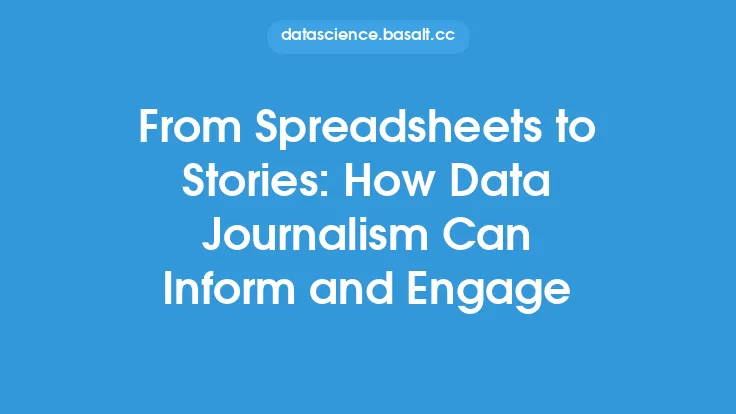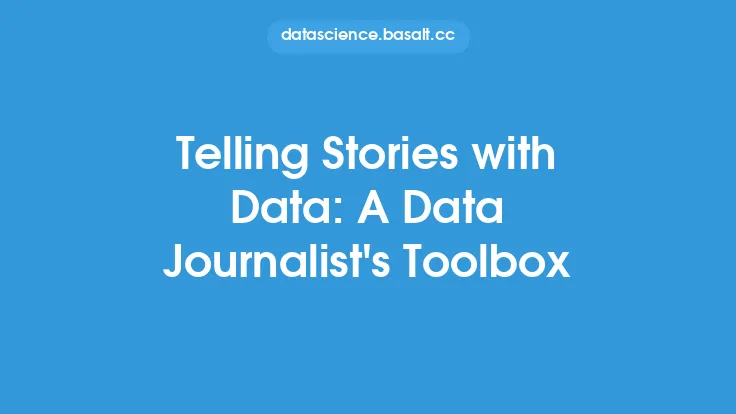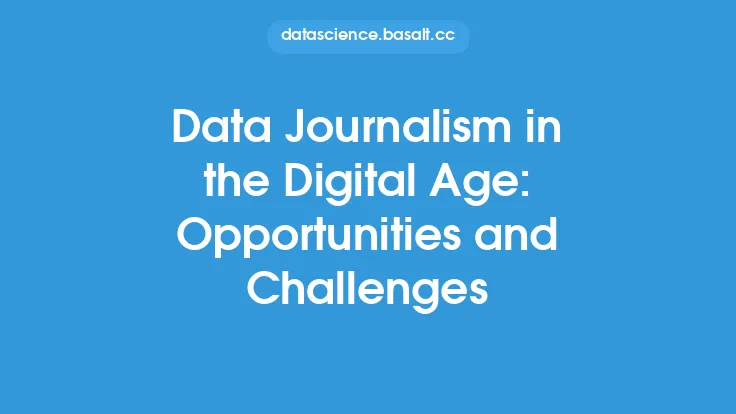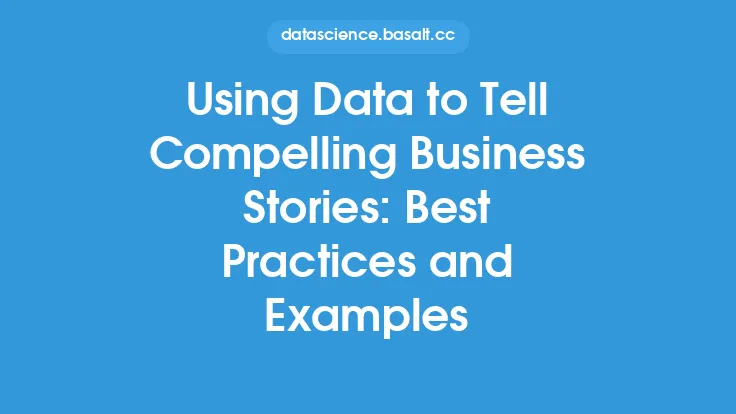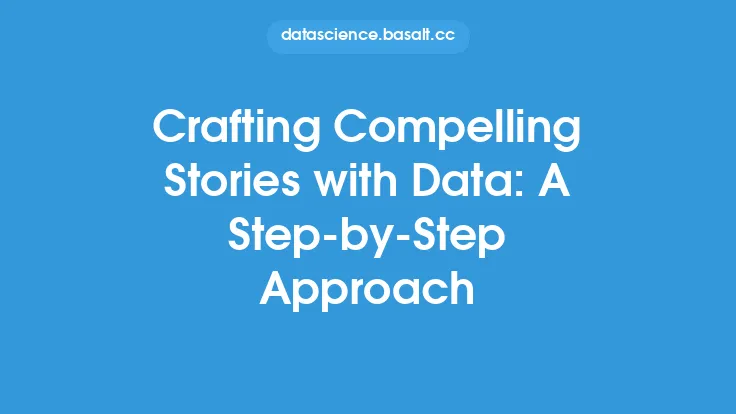Getting started with data journalism can seem daunting, especially for those without a background in statistics or computer programming. However, with the right tools and techniques, anyone can learn to find and tell compelling stories with data. The first step is to understand what data journalism is and how it can be used to tell stories. Data journalism is the process of using data to tell stories and convey information in a way that is engaging and easy to understand. It involves collecting, analyzing, and interpreting data to identify trends, patterns, and insights that can be used to inform and engage audiences.
Introduction to Data Journalism
Data journalism is a rapidly growing field that combines traditional journalism with data analysis and visualization. It involves using data to tell stories, convey information, and provide context to readers. Data journalists use a variety of tools and techniques to collect, analyze, and interpret data, including statistical software, programming languages, and data visualization tools. The goal of data journalism is to provide readers with a deeper understanding of complex issues and to help them make informed decisions.
Finding Data
One of the most important steps in data journalism is finding data. There are many sources of data available, including government databases, public records, and private datasets. Data journalists can also collect their own data through surveys, interviews, and observations. When searching for data, it's essential to consider the credibility and reliability of the source. Government databases and public records are often considered to be reliable sources of data, while private datasets may be more prone to bias and error. Additionally, data journalists should always verify the accuracy of the data they collect and use.
Cleaning and Preprocessing Data
Once data has been collected, it's essential to clean and preprocess it before analysis. This involves checking for errors, handling missing values, and transforming the data into a format that can be easily analyzed. Data journalists can use a variety of tools to clean and preprocess data, including spreadsheet software, statistical software, and programming languages. For example, data journalists can use Excel to clean and format data, or they can use programming languages like Python or R to write scripts that automate the process.
Analyzing Data
After data has been cleaned and preprocessed, it's ready for analysis. Data journalists can use a variety of techniques to analyze data, including statistical analysis, data visualization, and machine learning. Statistical analysis involves using statistical methods to identify trends and patterns in the data. Data visualization involves using visualizations like charts, graphs, and maps to communicate insights and trends in the data. Machine learning involves using algorithms to identify patterns and make predictions based on the data. Data journalists can use a variety of tools to analyze data, including statistical software, data visualization tools, and programming languages.
Visualizing Data
Data visualization is a critical component of data journalism. It involves using visualizations like charts, graphs, and maps to communicate insights and trends in the data. Data journalists can use a variety of tools to create visualizations, including data visualization software, programming languages, and spreadsheet software. For example, data journalists can use Tableau to create interactive visualizations, or they can use programming languages like D3.js to create custom visualizations. When creating visualizations, data journalists should consider the audience and the story they are trying to tell. Visualizations should be clear, concise, and easy to understand.
Telling Stories with Data
The final step in data journalism is telling stories with data. This involves using the insights and trends identified in the data to tell a compelling story. Data journalists can use a variety of techniques to tell stories with data, including narrative writing, data visualization, and interactive storytelling. Narrative writing involves using words to tell a story and convey information. Data visualization involves using visualizations to communicate insights and trends in the data. Interactive storytelling involves using interactive visualizations and tools to engage readers and provide a more immersive experience. When telling stories with data, data journalists should consider the audience and the story they are trying to tell. Stories should be clear, concise, and engaging.
Best Practices for Data Journalism
There are several best practices that data journalists should follow when working with data. First, data journalists should always verify the accuracy of the data they collect and use. This involves checking for errors, handling missing values, and transforming the data into a format that can be easily analyzed. Second, data journalists should consider the credibility and reliability of the source. Government databases and public records are often considered to be reliable sources of data, while private datasets may be more prone to bias and error. Third, data journalists should be transparent about their methods and sources. This involves providing readers with information about how the data was collected, analyzed, and visualized. Finally, data journalists should always consider the audience and the story they are trying to tell. Stories should be clear, concise, and engaging, and visualizations should be easy to understand.
Common Tools and Technologies
There are many tools and technologies that data journalists can use to collect, analyze, and visualize data. Some common tools include spreadsheet software like Excel, statistical software like R or SPSS, and data visualization tools like Tableau or D3.js. Data journalists can also use programming languages like Python or JavaScript to write scripts that automate the process of collecting, analyzing, and visualizing data. Additionally, data journalists can use online platforms like GitHub or Kaggle to share and collaborate on data projects.
Conclusion
Data journalism is a powerful tool for telling stories and conveying information. By using data to identify trends, patterns, and insights, data journalists can provide readers with a deeper understanding of complex issues and help them make informed decisions. To get started with data journalism, it's essential to understand the basics of data analysis and visualization, as well as the tools and technologies used in the field. With practice and experience, anyone can learn to find and tell compelling stories with data. Whether you're a journalist, a researcher, or simply someone interested in data, data journalism is a valuable skill that can help you communicate complex information in a clear and engaging way.
